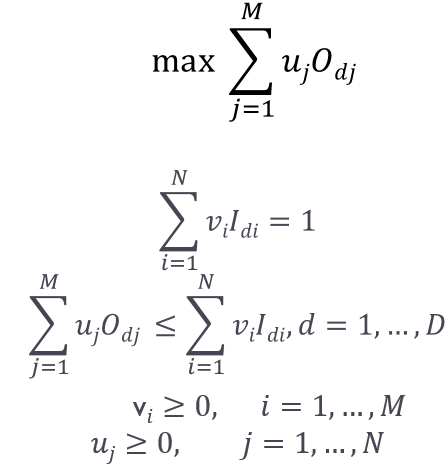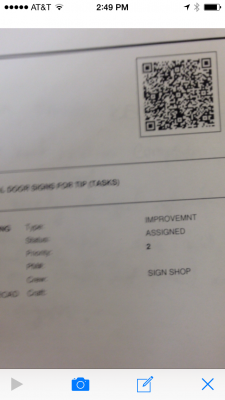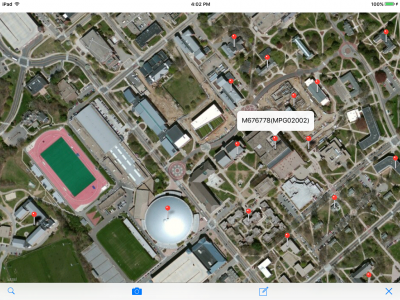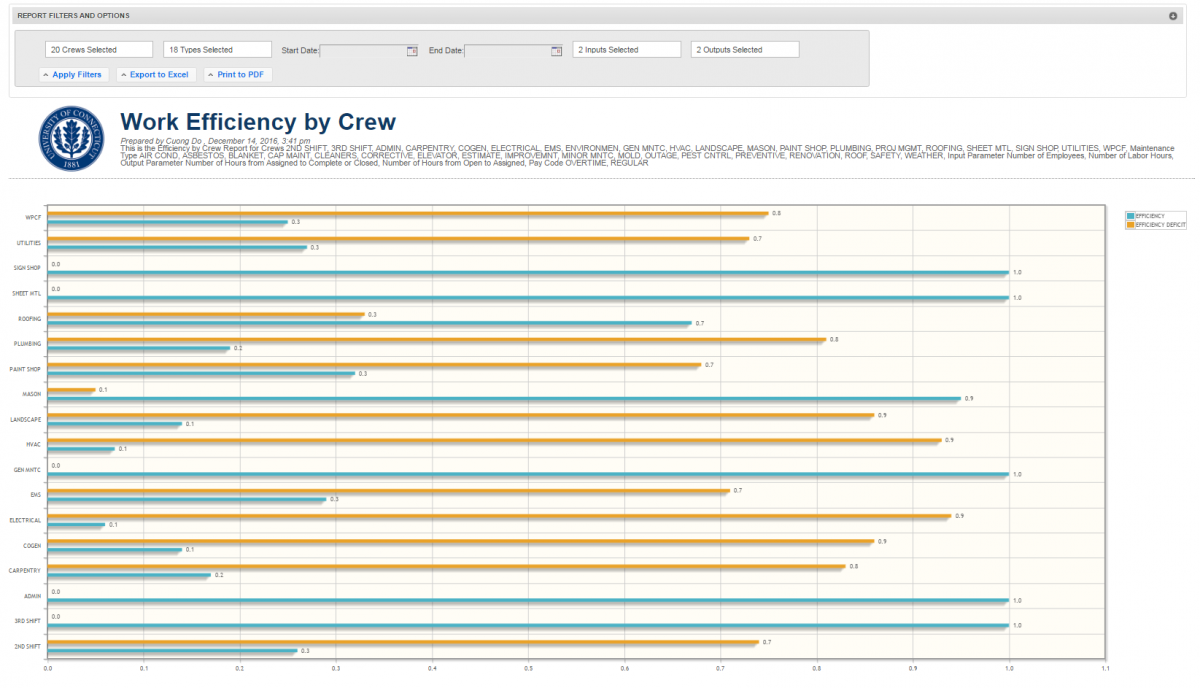Introduction
Data Envelopment Analysis is a novel approach to evaluate efficiency of peer entities (Decision Making Units –DMUs) with multiple inputs and outputs. It was first introduced in 1978 by Charnes, Cooper & Rhodes in the seminal work “Measuring the efficiency of decision making units“, with application of linear programming to estimate efficiency. It has a wide range of applications in Operations Research, Economics, Finance, etc. We apply DEA to compute efficiency for working crews.
Optimization Problem
D: Number of DMUs, with d=1,…,D
N: Number of inputs, with i=1,…,N
M: Number of outputs, with j=1,…,M
Idi: Level of input i from unit d
Odj: Level of output j from unit d
Model variables:
Efficiency of a DMU

in which:
vi: the weight on output i
uj: the weight on input j
So the constrained optimization problem is as follows:

and can be solved using linear programming.
Input/Output Settings
Inputs
Number of labor hours
Number of employees
Outputs
(Constant – Hours from Open to Assigned)
(Constant – Hours from Assigned to Complete or Closed)
More input/output variables can be added, such as pay rate, etc.
The capture of time is supported by an iPhone/iPad app, that scans a QR Code on the work orders, and marks the work orders complete.

Fig 1: iPhone snapshot of QR Code scanning screen

Fig 2: iPad snapshot of current work within 24-hour window in the main campus
Display
The data inputs and outputs are queried from Oracle DBMS. LP Solver is used for linear programming optimization and installed on the PHP Linux server. Display panel shows the efficiency scores graphically:

Fig 3: Crew efficiency scores by crews
Available Filters: Crews, Maintenance Type, Enter Date
The chart is based on jQuery/jqPlot.